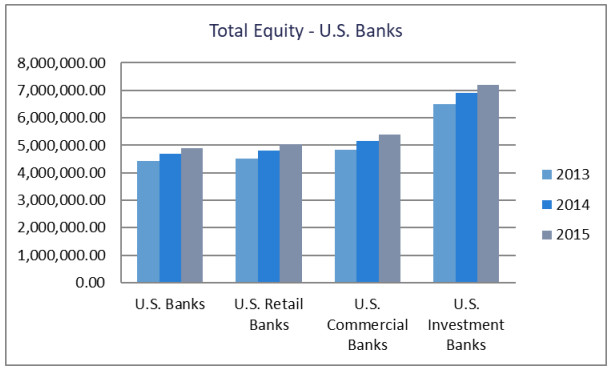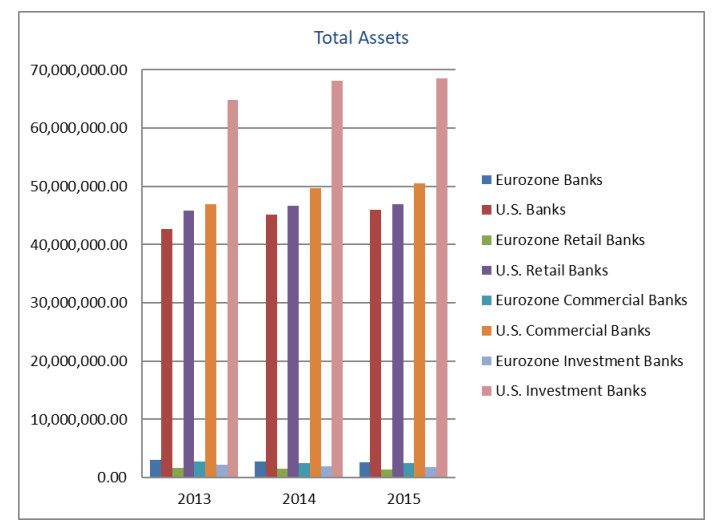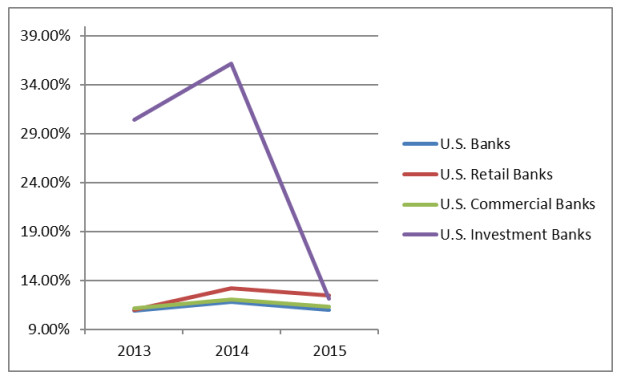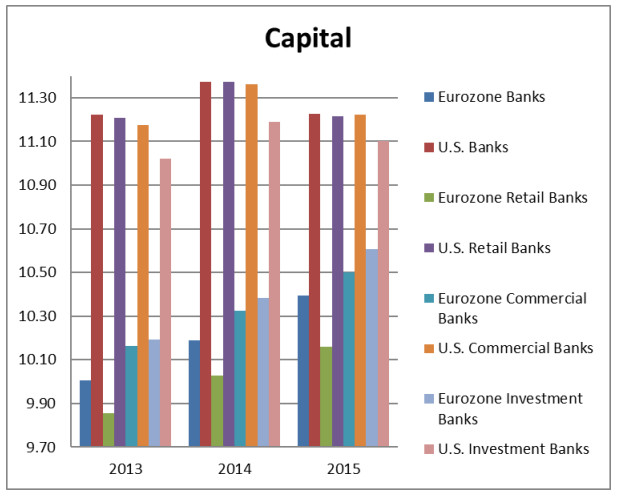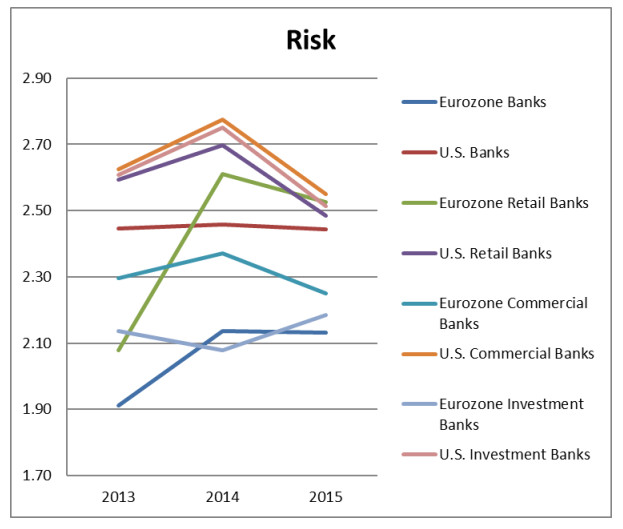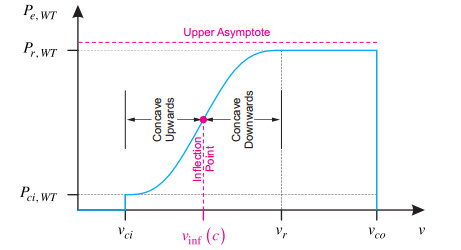Abbreviations: Charnes, Cooper and Rhodes model: C.C.R.; Data envelopment analysis: D.E.A.; Decision Making Unit: D.M.U.
1.
Introduction
The dire consequences of the recent financial crisis have revealed the weakness of the regulatory framework to assure the financial stability of banking institutions. The existing regulations did not prevent banks from taking excessive risks, and thus highlighted the need for a further understanding of the bank risk determinants (Ding and Sickles, 2019). Moreover, it has been suggested that capital requirements are not able to prevent bank failure alone as many banks that failed attained adequate capital before the crisis, so further examination of capital is required (Bitar et al., 2018). The recent financial turmoil also revealed how fundamental the further investigation of the role of efficiency in the stability of the banking systems is, as well as the risk taking behaviour (Mosko and Bozdo, 2016). Multiple studies investigate the bank capital, risk and efficiency as well as the relationships between those variables (Bashir and Hassan, 2017; Nguyen and Nghiem, 2015; Williams, 2004; Anginer and Demirguc-Kunt, 2014; Le, 2018; Williams, 2004). However, the results of the existing literature are conflicting, stimulating further empirical research on this issue.
Additionally, the recent financial crisis showed how differently banking systems may behave after financial shocks. A typical example could be the Eurozone and the U.S. banking systems. Although the number of Eurozone banks' failures is lower than that of U.S. banking institutions, the speed of recovery of U.S. Banking systems was remarkably greater (Ackermann, 2019). This fact could be attributed to the different characteristics of both economies and banking institutions and to the different measures and policies implemented for the recovery from the financial crisis (Lakhani et al., 2019). To the extent of our knowledge, there is no study comparing the levels of capital, risk and efficiency of Eurozone and U.S. banking systems by employing after crisis data. Therefore, in our paper we examine the development of the levels of capital, risk and efficiency develop in Eurozone and U.S. baking systems during the period 2013–2015.
For the purposes of our study, we use a sample that consists of 3287 retail, commercial, investment and saving Eurozone and U.S. banks. It involves annual agammaegate balance sheet and income statement data from the period 2013–2015. We investigate separately capital, risk and efficiency of both economic unions, Eurozone and the U.S. We also examine the three subetaoups of Eurozone and those of U.S. banks depending on the banking sector (retail, commercial and investment banks).
As regards methodology, we evaluate the efficiency of the banking institutions of our sample by applying the input-oriented Charnes, Cooper and Rhodes (C.C.R.) model of Data Envelopment Analysis (D.E.A.) developed by Charnes et al. (1978). We measure bank capital by employing the ratio of the value of total equity to total assets and the Z-score as an indicator of bank risk.
Concerning the contributions of the paper, our study builds on the existing literature by thoroughly examining bank capital, risk and efficiency with a contemporaneous data set, as the research with data from the period 2013 and onwards is very limited and this includes the recovery period after the global financial crisis. Additionally, our study is the first to focus on the comparison of U.S. and Eurozone bank samples. The comparison is of utmost importance as the country unions have different characteristics and a different speed of recovery from the financial crisis. Moreover, to the extent of our knowledge our study is the first to separately investigate the capital, risk and efficiency results per bank type (investment, retail and commercial banks) by employing post-crisis data.
The paper is organised as follows: Section 2 presents the literature review. Section 3 describes the research methodology employed. Section 4 presents the data sample and Section 5 the empirical results. Section 6 outlines the findings and describes the conclusions.
2.
Literature review
After the introduction of the Basel Accord (1988), a multiple number of studies started to examine the relationship between bank capital and risk, by investigating the effect of bank capital adequacy regulations on bank risk. In contrast to the policy consensus, up until now, the literature yields contradicting results (Dahl and Shrieves, 1990; Rime, 2001; Repullo, 2002). The number of those studies also increased significantly in the aftermath of the recent financial crisis where great concern for the stability of banking institutions arose.
According to several authors, a higher level of capital decreases the probability of default because the banks of multiple reasons. More specifically, banks are able to withstand a decrease in their assets, withdrawals of deposits and money payments (Anginer and Demirguc-Kunt, 2014). The banking institutions are also able to react to the requirement of more capital by increasing, even more, their portfolio risk (Fiordelisi et al, 2011b; Tan and Floros, 2013). Moreover, the managers of poorly capitalized banks have moral hazard incentives to take on increased portfolio risks as those banks face more risks as a result of lower capital adequacy (Nguyen and Nghiem, 2015; Le, 2018). The banks have benefited from the existence of deposit insurance schemes and take on further risks, the lesser the bank capital is, as they only risk the shareholders' capital and not the deposits (Kim and Santomero, 1988). Lastly, banking institutions minimize the costs of having to rapidly issue bank equity (Peura and Keppo, 2006).
Jacques and Nigro (1997) employ a three-stage least squares (3SLS) methodology to examine the interrelationship among bank capital, the risk-based capital standards and portfolio risk in commercial U.S. banks over the period 1990–1991. According to their results, the implementation of risk-based capital standards resulted in the increase of capital ratios and the reduction of portfolio risk. Similarly, Salas and Saurina (2003) suggest that a decrease of capital forgoes an increase in risk in Spanish banking institutions. In a more recent paper, Anginer and Demirguc-Kunt (2014) assess the empirical association between capital and risk by using multiple alternative measures of risk in more than 45 countries (1998–2012). Their findings indicate that an increase in capital precedes a decrease in risk. Ashraf et al. (2016) investigates the impact of risk-based capital requirements on bank risk-taking behavior in commercial banks of Pakistan during 2005–2012, by employing bias corrected least squares dummy variable (LSDVC) method and system GMM method to control for panel fixed effects, dynamic dependent variables, and endogenous independent variables. The results indicate that banks have reduced their portfolio risk as a result of increased capital requirements. Teixeira et al. (2019) suggest that there is a negative relationship among capital regulations and risk during systemic crisis years.
On the other hand, the managers of better capitalized banks tend to adopt cost-reducing practices as they have less moral hazard incentives (Tan and Floros, 2013; Fiordelisi et al., 2011b). Haq and Heaney (2012) examine a sample of European banks during the period 1996–2010 and support the hypothesis that there is a U-shaped relationship between risk and capital. Teixeira et al. (2014) suggest that the relationship among risk and capital requirements depends on the location and the bank type. Last but not least, a number of studies conclude that there is no connection between bank capital and risk (Bitar et al., 2018; Cathcart et al., 2015).
Furthermore, many studies investigate the relationship of capital and efficiency. The majority of the literature supports that there is a positive relationship between efficiency and capital (Bitar et al., 2018; Le, 2018; Kwan and Eisenbeis, 1997). For instance, Sufian (2016) employ Data Envelopment Analysis to estimate the efficiency of Malaysian banks for the period 1999–2008. Moreover, Banker et al. (2010) examine Korean banking institutions during the period 1995–2005. Both studies suggest that efficiency is positively related to capital. However, according to other studies (for example Bashir and Hassan, 2017) when capital increases, so do the agency costs and the free cash at the disposal of managers, and therefore efficiency decreases.
Multiple studies examining the relationship of efficiency and risk yield conflicting results. To be more precise, according to many authors efficiency and risk are adversely related (Tan and Floros, 2013; Williams, 2004; Le, 2018). An explanation could be that a decrease in efficiency could motivate the bank to boost its risks in order to offset the lost levels of efficiency (Nguyen and Nghiem, 2015). Apart from credit and operational problems, poor managerial practices also can tarnish the banks reputation and cause market problems (Altunbas et al., 2007; Tan and Floros, 2013).
However, multiple studies suggest that there is a positive relationship between risk and efficiency (Altunbas et al., 2007; Bashir and Hassan, 2017; Williams, 2004; Nguyen and Nghiem, 2015). This could happen as banks that do not spend resources on risk monitoring and especially credit risk monitoring (monitoring of non-performing loans as well as other loans) appear to be more efficient in the short term. Yet, they take on higher risk in the medium and long term as this managerial behavior affects the quality of future loans.
Regarding the banking sectors, to our knowledge there is no study comparing capital, risk and efficiency in different subetaoups of banking institutions (retail, commercial and investment banks). Additionally, the number of studies assessing the association among capital, risk and efficiency on retail and commercial banks is considerably higher than those on investment banks (Fiordelisi et al., 2011a).
Finally, apart from efficiency many studies investigate the development and the determinants of bank profitability, as an alternative measure of bank efficiency (Feng and Wang, 2018; Molyneux et al., 2019). For example, Teixeira et al. (2019) investigates the effect of the dividend policy of banks, the institutional environment and banking regulation to the bank profitability of banks from Organisation for Economic Cooperation and Development (O.E.C.D.) countries, during the period 2004–2015.
3.
Research methodology
Concerning the methodology, we employ a three-step approach. Initially, we employ the input-oriented C.C.R. model of D.E.A., developed by Charnes et al. (1978). In the next step, we apply the ratio of the value of total equity to total assets to calculate the bank capital. In the final step, we employ Z-score index in order to measure bank insolvency risk.
3.1. Estimation of banking efficiency
While trying to explore the associations among capital, risk and efficiency, initially, we calculate the efficiency of banking institutions. Banking efficiency can be estimated as the radial distance to an efficient frontier, and the related literature is divided into two classifications: non-parametric and parametric analysis. Mainly applied methodologies of each classification are Data Envelopment Analysis (D.E.A.) and Stochastic Frontier Approach (S.F.A.), respectively.
Following Tan and Floros (2013), Casu and Girardone (2009), Hou et al. (2014), Le (2018), and Zhang and Matthews (2012), we measure efficiency by employing D.E.A., developed by Charnes et al. (1978). A key advantage of this analysis and the main reason for its selection is that it can be used in order to compare banking institutions of different sizes. We should also mention that the provided results are relative and are adjusted accordingly to the D.M.U. included in the sample (Charnes et al., 1978; Stavarek, 2004).
Our model employed is C.C.R. model (Charnes et al., 1978), and the approach is the intermediation approach (Sealey and Lindley, 1977). The model is vastly employed by the literature (Shah et al., 2019; Maity and Ganguly, 2019; Marjanović et al., 2018; Christopoulos et al., 2020). As regards the characteristics of the model, it measures the ability of a Decision Making Unit (D.M.U.), j = 1, .…, n to utilize a number of inputs xi, j, i = 1, …., m in order to produce multiple outputs xr, j, r = 1, .…, s by creating a ratio of their weighted sums. Our model is input-oriented and is based on constant returns to scale, radial distance and convex structure. The multiplier applied for the definition of the D.M.U.0 and the linear form is defined as follows:
max
subject to
vi, ur≥ ε ≥ 0
where:
vi = relative importance of input i
ur = relative importance of output r
ε = non-Archimedean value
The D.M.U.0 is efficient if the associated objective Equation (1) is equal to 1, and this means that there is at least one optimal solution which yields, otherwise it is inefficient and the lower the efficiency score is, the less the efficiency of the D.M.U.
3.2. Estimation of bank capital and risk
Our empirical estimation also requires the calculation of capital and risk of the banking institutions in our sample. Bank capital is measured as the ratio of the value of total equity to total assets, which is mainly employed in the literature (Fiordelisi, 2011b; Tan and Floros, 2013; Zhang et al., 2013; Nguyen and Nghiem, 2015).
We now turn our attention to discussing the risk of banking institutions. We witness that there is no consensus in the measurements employed for bank risk. Credit risk measurements are frequently used such as the ratio of non-performing loans (NPLs) to total loans1, the ratio of loan loss provisions to total loans (Tan and Floros, 2013) and the ratio of loan loss provisions to total assets (Bitar et al., 2018). Market and liquidity risks are also employed in many studies (Zhang et al., 2013; Deelchand and Padgett, 2009).
1The ratio of NPLs to total loans is vastly employed in the literature. For instance: Fiordelisi et al. (2011b); Bashir and Hassan (2017); Kabir and Worthington (2017); Shim (2013).
Nonetheless, the majority of recent research employs the insolvency risk, measured by using either Distance to Default (D-t-D) measure2 or Z-score (Nguyen and Nghiem, 2015; Moyo, 2018, Barra and Zotti, 2018; Fiordelisi et al., 2011a, Ben Salah Mahdi and Boujelbene Abbes, 2018; Kabir and Worthington, 2017; Ghosh, 2014; Fiordelisi and Mare, 2014).
2 For example Saeed and Izzeldin (2016); Fiordelisi et al. (20011b); Kabir and Worthington (2017) employ D-t-D measure of insolvency risk.
We measure bank risk by the the Z-score. This index is widely used as an indicator of the probability of default and an indicator of bank soundness because it represents "the number of standard deviations by which returns have to diminish in order to deplete the equity of a bank" (Fiordelisi and Mare, 2014). A higher Z-score implies higher bank solvency and lower probability of default, and is considered a direct measure of bank stability (Barra and Zotti, 2018).
Furthermore, the Z-score has many benefits. Initially, it can be calculated for banks which are listed, as well as for the non-listed ones, while the D-t-D measures require data only from listed banks (Kabir and Worthington, 2017). This is very important for the purposes of our survey as the sample includes both categories. It is also easy to calculate the Z-score since only accounting data are required. Lastly, the approach by which it associates capital, profits and risk is accepted by theoretical research (Barra and Zotti, 2018; Schaek and Cihak, 2008).
Following Fiordelisi and Mare (2014) we apply the natural logarithm of Z-score, thus solving the problem of the existence of higher values in the distribution. Therefore, insolvency risk (RISK) for each bank (i), time (t) and full sample period (T) is estimated as follows:
where:
EQ = equity to total assets
ROA = return on average assets
σ (ROA) = the standard deviation of ROA
4.
Data
Concerning the group of Eurozone banks, we analyze 2706 banks from countries participating in the European Economic Monetary Union; Austria, Belgium, Cyprus, Germany, Estonia, Spain, France, Greece, Ireland, Italy, Lithuania, Luxembourg, Latvia, Malta, the Netherlands, Portugal, Slovenia and Slovakia. Additionally, we investigate separately three subetaoups of Eurozone banks depending on the type of bank; retail, commercial and investment banks which include 1986, 2017, 1158 banks respectively. The United States banks group is separately examined and it comprises data from 581 banks, while its three subetaoups retail, commercial and investment banks consist of 528,507 and 328 banks. The number of banks in each country is presented in Table 1.
The average prices of the inputs and outputs of the Eurozone and the United States groups as well as their subetaoups, which are employed in the D.E.A. model of our study, are shown in Table 2.
According to the Table 2, it is interesting to note that both inputs and outputs of Eurozone banks slightly fall during the reported period, whereas the inputs and outputs of U.S. banks rise to some extent.
Moreover, we observe that the average figures of all the inputs and outputs are significantly larger in the U.S. sample compared to the Eurozone sample. This could be attributed to the fact that after the financial crisis U.S. banks were considerably recapitalized, whereas Eurozone banks were not (Jenkins, 2015).
It is also interesting to note that the findings indicate that the ratio of net interest income to capital is considerably higher in U.S. banks than in Eurozone banks. An explanation of this result might be the different monetary policies employed by the Federal Reserve (interest rates positive or close to zero) and the European Central Bank (negative interest rates) which have a significant impact on net interest incomes.
The descriptive statistics indicate that lending in the Eurozone has decreased during the reported period, while U.S. banks increased their lending ratios. This could be attributed to the fact that only Eurozone banks reduced their lending policy in order to lessen their risk levels after the financial crisis (Kok et al., 2016).
The average total equity of Eurozone banks and U.S. banks are illustrated in Figure 1 and Figure 2. As we can observe, the U.S. banks of our sample have, on average, considerably more equity than Eurozone banks. It is also interesting to note that although the equity of Eurozone banks decreases during the reported period, the total equity of U.S. banks grows. We observe that, the total equity of U.S. investment banks is the highest reported, while the total equity of Eurozone retail banks is the lowest. The average total assets follow the same pattern and are presented in Figure 3. The descriptive statistics of the total equity and total assets of our sample are presented in Table 3.
A summary of the average of return on average assets (ROA) is depicted in the Figure 4 and the descriptive statistics in the Table 3. We can observe that the R.O.A. estimates of Eurozone banks are below the rule of thumb3 (lower than 0.5%) and significantly weaker than those of U.S. banks (about 1%). Our results are consistent with those of the Federal Reserve Bank, 2019 which record that from 1990 until 2018 the R.O.A. ratio is about or above 1% in the majority of years. Our results are also in line with the findings of Lakhani et al. (2019) who indicate that after the financial crisis the European R.O.A. ratio has weakened, whereas there is an increase in the U.S. ratio.
3 As per the rule of thumb a healthy banking institution tends to genereate 1%–2% R.O.A. (Golin and Delhaise, 2013).
5.
Empirical results
In this section, we present the empirical results of our analysis. Initially, we compare the results of the efficiency of Eurozone and U.S. banking institutions, which are measured by D.E.A. analysis. Following the same pattern, bank capital (estimated by the value of total equity to total assets) and risk results (measured by Z-score) are analyzed in the next sections of our analysis.
5.1. Efficiency
The efficiency estimates are examined by employing D.E.A. separately to the groups and subetaoups of our sample. Our results are derived from "rDEA" package version 4.47 in R software developed by Simm and Besstremyannaya, 2016 are presented in the Figure 5 & 6 and the descriptive statistics of the results are reported in Table 4.
Our findings indicate that the average efficiency of the Eurozone banks as well as of the U.S. banks, except for U.S. investment banks, increased during the reported period. This could be attributed to the recovery that followed the financial crisis 2007–2009. It is important to notice that in most cases the efficiency of U.S. banks is higher than 10% and higher than the efficiency of Eurozone banks. This finding is in line with Christopoulos (2020) suggesting that the efficiency of Eurozone banking is low during the reported period. This result associated with the different interest rate policies implemented by central banks, the different levels of after-crisis regulatory flexibility and the different speed of recovery for the two economies (Lakhani et al., 2019; McLannahan and Arnold, 2017). The outcome is also linked with the after-crisis restructuring of the Eurozone banking system which was significantly lower than that of the U.S. Additionally, the Troubled Asset Relief Program was signed in 2008 and U.S. banks were rapidly recapitalized after the crisis, whereas no relative program was created in the Eurozone (Jenkins, 2015). Finally, a very important explanatory factor could be that European banks have almost double non-performing loans ratios in comparison to U.S. banks and the outcome is worse for the Eurozone since Italian, Spanish, Irish and Greek banks are those with the highest rates of bad loans (Binham and Noonan, 2015).
According to the figures 5 and 6, we notice that the average efficiency in the year 2013 is the lowest recorded except for U.S. investment banks. We also witness the highest rate of efficiency is in the year 2014. The decrease of efficiency is rather small for the general sample, whereas the efficiency of investment banks decrease more sharply. The reduction in efficiency levels could be attributed to both economic unions complying with the Basel Ⅲ Accord during the period 2014–2015. Another reason could be that during 2014–2015 the economy returned to normal growth rates in comparison with the previous years, when growth rates were relatively high following the very low levels recorded during the financial crisis (Jenkins and Arnold, 2015).
Our results suggest that investment banks are the most efficient type of banks with the largest fluctuations among banking groups. The findings also convey that the efficiency of the U.S. investment banks is, on average, enhanced compared to Eurozone banks, and this could be attributed to two main reasons: i. capital markets and corporates in the United States are the biggest in the world, ii. the market share for U.S. investment banks increases, whereas that of European investment banking decreases during the reported period (Goodhart and Schoenmaker, 2016; Reboul et al., 2018).
Concerning commercial banks, the fluctuations of efficiency are the least among the types of banks. Efficiency slightly increases during the reported period and reaches its peak in the year 2014. Additionally, the efficiency levels of U.S. commercial banks are enhanced (about 20%) compared to Eurozone commercial banks. This finding is in line with Weigand (2016) who provides evidence that U.S. commercial banks are more efficient than the European during the period 2014–2015. A similar pattern is observed for retail banks; the efficiency of U.S. retail banks is considerably higher than that of Eurozone retail banks. What is interesting is that, Eurozone retail bank efficiency levels continue to increase slightly but steadily during the reported period, whereas the efficiency of all the other reported types of banks reaches its peak in 2014. This could be explained as Eurozone banks focused on the retail bank activities after the financial crisis, because investment and corporate activities are considered more risky (Kok et al., 2016). We also note that the gap between the efficiency of retail banks and commercial banks increases during the year 2015 in both country unions, with the efficiency of retail banks recording higher levels.
Moreover, the graph conveys that the general samples of Eurozone and U.S. banks are on average the least efficient and that the efficiency of Eurozone general banks falls to the lowest level. The efficiency levels of the Eurozone general sample in the year 2013 are almost the same as those of commercial banks. This could be attributed to the fact that the greatest part of the general sample mostly consists of commercial banks. Finally, the average efficiency of the Eurozone general sample in 2013 is slightly under 8% being the lowest recorded.
5.2. Capital
Figure 7 presents the average capital ratio estimated by the value of total equity to total assets and Table 5 the descriptive statistics. The findings indicate that the capital ratio of U.S. banks is considerably higher than that of Eurozone banks regardless of the type of bank. This could be attributed to the fact that the capital ratio of U.S. banks is higher than the minimum capital regulations suggest as it is formed by market discipline. To be more precise, the U.S. banks can attain capital by equity or securitize debt more easily and at better prices if they have higher capital ratios because the capital market is more developed in the U.S. than in the Eurozone and the securitization of the U.S. is considerably more developed than the Eurozone's as a source of funding (Lakhani et al., 2019, European Central Bank, 2007)
During the reported period, the capital ratio of Eurozone banks steadily increases, while the capital ratio of U.S. banks reaches its peak in 2014. U.S. regulatory easing (Reboul et al., 2018) and new capital requirements in the Eurozone (Kok et al., 2016) might be other factors explaining this outcome since the Eurozone regulations enforce investment banks to attain higher capital levels than U.S. banks (Goodhart and Schoenmaker, 2016) and during the reported period Eurozone banks decreased their lending in order to adapt to capital standards (Schildbach, 2017).
It is also interesting to mention that the capital ratios of the banks of the same sector and different location have striking differences with each other. For instance, investment banks attain the highest levels of capital in the Eurozone sample, whereas investment banks reach the lowest levels in the U.S. sample. Moreover, the retail Eurozone bank sample indicates the lowest levels of capital recorded, while the levels of U.S. retail banks are among the highest.
5.3. Risk
Concerning the estimation of risk parameter, we measure insolvency risk by employing the Z-score index. The average risk ratio of the groups and subetaoups of our sample is illustrated in Figure 8 and the descriptive statistics in Table 5.
Concerning insolvency risk, we notice that the risk ratio of U.S. banks is higher than that of Eurozone banks. Surprisingly, an exception is the Eurozone retail bank group whose risk increases sharply during 2013–2014 and in the year 2015 is at the same levels as U.S. banks. In the aftermath of the global financial crisis, Eurozone banks focused on the retail bank domain in order to lessen the risk levels that investment and corporate activities entail (Kok et al., 2016). This may explain both the decreased levels of risk of Eurozone banks and the difference in the results for retail banks. Additionally, we notice that the risk of the reported banking institutions reaches its peak during the year 2014, with one exception that of Eurozone investment banks.
Moreover, we observe that U.S. commercial banks attain the highest levels of risk compared to the other types of banks and the general sample. The risk ratio of investment banks is lower than that of commercial banks which is an interesting finding compared to the levels of efficiency of investment banks. Finally, we find that the risk ratio of the general types of banks is, in most cases, the lowest recorded and furthermore the results for retail banks are rather mixed.
As regards the capital requirements and the bank risk taking, the results are conflicting. We can notice that new capital requirements in the Eurozone (Kok et al., 2016), resulted in a decrease in the risk ratio of the reported sample. This outcome is in line with Ashraf et al. (2016) and Teixeira et al. (2019). However, U.S. regulatory easing Reboul et al. (2018) did not cause an increase in bank risk ratios during the reported period and this outcome concurs with Lin et al. (2019). A possible explanation of the controversy in the results could be that there is a U-shaped relationship between capital and risk, regulatory pressure leads to reduced solvency at a banks' initial stage Zheng et al. (2017).
6.
Discussion
In this study, we examine the development of bank risk, capital and efficiency of the Eurozone and the United States after the global financial crisis. Our sample consists of agammaegate balance sheet and income statement data of a large data set of banking institutions during the period 2013–2015. Concerning the methodology, we estimate bank efficiency by applying the input-oriented C.C.R. model of Data Envelopment Analysis developed by Charnes et al. (1978). We estimate bank capital by employing the ratio of the value of total equity to total assets and the Z-score is used as an indicator of bank risk.
Initially, we estimated the efficiency and the findings convey that the efficiency level of the Eurozone banks is considerably lower than that of the U.S. banks. Moreover, the efficiency levels on average increase during the reported period while thy reach their peak in the year 2014. Concerning the banking sectors, the more efficient banks of our sample are the investment banks which are also those with the more fluctuations on the efficiency results. The second most efficient category is the retail and the least efficient is the commercial banking sector, with the gap between those two increasing during the year 2015.
Secondly, concerning capitalization, our findings indicate that the capital ratios of the banks of the same sector and different location have striking differences with each other. The results also indicate that the capital ratio of U.S. banks is significantly higher than that of Eurozone banks regardless of the type of bank. As for the risk ratio, the U.S. banks record higher level of risk than the Eurozone banks. Surprisingly, the risk ratio of investment banks is lower than that of commercial banks while the level of efficiency of investment banks is the highest.
Our study contributes to the existing literature in multiple ways. Initially, the research with data from 2013 and onwards in the field of bank capital, risk and efficiency is very limited. Moreover, to the extent of our knowledge, our study is the first to compare the capital, risk and efficiency of U.S. and the Eurozone banking systems and also to separately examine the results per bank type ((investment, retail and commercial banks).
Overall, we witness great discrepancies between the two banking groups and among the different sectors of banks in terms of capital, risk as well as efficiency. Therefore, our findings indicate the importance of the assessment of the interrelationship among capital, risk and efficiency of banking institutions. The sign of the relationship, the direction of the causality and the determinants of those three parameters and could instigate further research that resolves those issues. Additionally, the comparison of U.S. and Eurozone banking systems after the financial crisis and the speed of recovery after the financial crisis is a topic that could be further investigated. Finally, our approach could be enriched with the estimation of with other D.E.A. methodologies (for example the two-stage semi-parametric double bootstrap DEA method of Simar and Wilson (2007) and by the investigation of a sample covering more years after the financial crisis.
Apart from the contribution to the empirical research, our results are important from a bank prudential supervisory perspective. Our findings indicate great discrepancies of capital, risk and efficiency among different banking sectors and banking systems with different characteristics. Thus, regulators should consider the banking sector and the location of the banking institutions when implementing regulations concerning the financial stability.
Conflict of interest
All authors declare no conflict of interest.









 DownLoad:
DownLoad:

